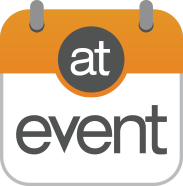In a recent straw poll taken during our webinar, Connecting the Dots from Event to Sale, 72% of attendees identified sales-ready leads as the most important event metric for their sales reps today.
This response wasn’t a surprise, but it did make us wonder: If sales-ready leads are the end goal, why are so many organizations satisfied with event tactics that don’t move us any closer to this prize?
Conferences have always been an opportunity to have face time with potential prospects. While sales attendees might make good headway over lunch or drinks, the main measure of success is usually the number of contacts captured. But contacts do not equal leads and focusing solely on contacts often means all the relationship-building that happens at the event stays at the event.
Getting more sales-ready leads means moving away from the contacts mindset and embracing new technologies that make it easier to capture details about event interactions.
Here are six simple changes your organization can make to capitalize on the rich interactions that occur at events, so your sales team gets better leads, faster.
1. Define New Metrics
Take a look at your current event metrics. Chances are they have a lot to do with the quantity of contacts captured—such as the number of people who checked in at your booth, entered your drawing, or signed up for your mailing list.
The first step to getting more out of your events is shifting your focus to metrics that have to do with contact quality. For instance:
- What percentage of your covered accounts were engaged?
- How many new accounts were added for nurture?
- How many marketing qualified leads (MQLs) were generated?
- How many sales qualified leads (SQLs) were generated?
- What was your sales velocity after the event?
2. Ditch Your Fishbowl
And your free lunch, your raffle, and any other event activities designed to draw in as many business cards and email addresses as possible.
That’s right. Get rid of virtually every activity you’ve used up to now to collect contacts.
You may be thinking, Okay, I get it, I need to try some new event tactics, but can’t I just keep these old ones in the mix? What’s the harm in that?
To understand the problem with these activities, let’s look at what happens to all those business cards after your event. Before anyone can reach out to those contacts, they need to be entered into a spreadsheet (hopefully without errors!) and imported into your CRM, where (fingers crossed) your data cleaning algorithms can flag typos and purge duplicates. Now you have a “clean” electronic list, but there is no way to tell who was actually interested in your solution and who just wanted a free lunch. Put another way, there is no way to tell how sales-ready your leads are.
Tempting as they may be, these activities are not moving your organization closer to sales. It’s time to give them up in favor of activities that will bring higher quality leads and shorten the time to sale!
3. Go for Intelligence, Not Names
Bloated databases waste time and resources, inevitably slowing down the lead-to-sale pipeline. But the heart of the problem is that really great conversations are taking place at your events, and only a fraction of that information is getting back to marketing and sales.
What if you had an easy and elegant way to pass this information on to your marketing and sales team? What if they could get this information within days or hours after your event? Your event “leads” would no longer be all at the same baseline, but can be automatically scored in your CRM, put into a targeted nurture track through your marketing automation system, and, if sales-ready, pushed directly to a sales representative for timely follow-up.
4. Use an App
To make the shift from names to intelligence, you must empower all of your event staff to capture actionable information at your events. The best way to do this is with an app that allows staff to quickly capture accurate contact information and easily add important context about the interaction, such as:
- What did the prospects talk about?
- Did they indicate their budget, authority, need or timeframe?
- Which follow-up actions were prospects interested in?
- How have these prospects—and their accounts—engaged with your organization in the past, whether online, on the phone, or at other events?
When you use an app that is integrated with your CRM and marketing automation system, this crucial information can get into the hands of marketing and sales much faster than the old business card or paper list method.
atEvent provides the leading event app in this space. Click HERE to contact a team member about using atEvent at your events and see a demo!
5. Embrace eNurture
You’ve rethought your metrics, recalibrated your event activities, and invested in an app that helps you capture event intelligence. Your sales team is in a great position to receive and quickly follow up with any sales-ready leads captured at your event. And, you’re in a great position to nurture those event contacts that aren’t quite “sales-ready.” A strong, post-event nurture strategy can help you accelerate the process of moving MQLs from your event into the sales-ready stage. Because you are working with higher quality leads (rather than fishbowl contacts), you can expect a greater return on these emails
6. Optimize
When you begin gathering event sales intelligence, you will also gain a huge store of data that can help you better evaluate previous events and plan for future ones. For instance, you can begin tracking and analyzing things like:
- The number of prospects that registered for—and checked into—your event
- Your covered account engagement at your most recent event—and across events over time
- The top topics of interest and follow-up actions at your recent event and at previous events
- The number of MQLs added daily, over the whole event, and in comparison to previous events
This is just the tip of the iceberg of what you can track and analyze once you shift over to an event sales intelligence model. What you decide to measure should relate directly back to the metrics you defined in step 1 of this process, thereby closing the loop and allowing marketing and event planners to fine-tune your next engagement to better meet the needs of attendees.
We’ll be visiting all of these topics in greater depth throughout the coming weeks.








